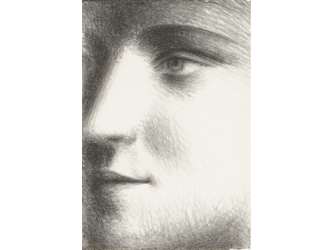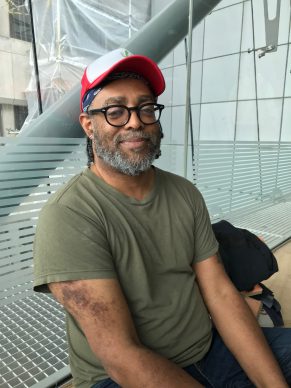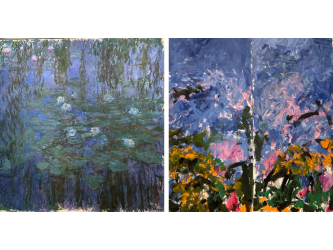In keeping with the times
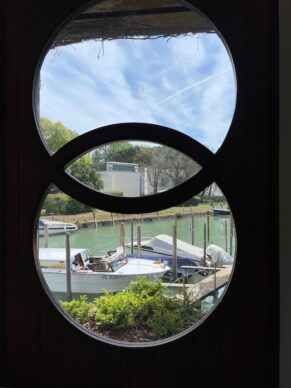
The Venice Biennale 2022 has never before been so in keeping with the times. Firstly because the vast majority of it is dedicated to women, the half of the global population demanding their rights with increasing force. Next because the public health crisis has accentuated artists’ social awareness and also because it expresses more than ever the anguish of war and the global geopolitical and ecological crisis.
Colours and representations

Simone Leigh
Miraculously this is nonetheless not a bleak biennale. It explodes with colours and representations.
Russian Pavilion

The Russian Pavilion
On a geopolitical level, the first thing we observe is the closure of the Russian pavilion in the middle of the Giardini, with guards posted outside. It is prohibited to approach the site, whose curator Raimundas Malasauskas resigned from his post following the onset of the war waged by Russia in Ukraine.
Ukraine here
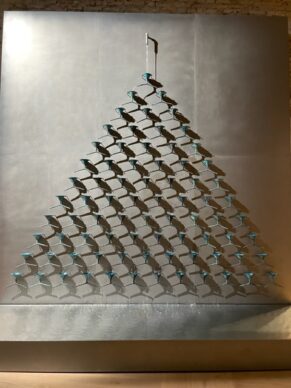
Pavlo Makov
But at the Arsenale, like an act of revenge from the invaded country, the artist representing Ukraine Pavlo Makov (1958) is very much present, his work having been transported by car following the outbreak of conflict and then assembled in Milan.
Pavlo Makov
His piece is a fountain, which is beautifully poetic, from which the liquid trickles from a central stream into a kind of overflowing tray. The “Fountain of Exhaustion”, as it is called, was meant to be in reference to the environment. Since then the state of affairs has changed, but Pavlo maintains passionately that even if Europe is exhausted, Ukraine cannot allow itself to be so. His presence in Venice marks a historic moment.
Anselm Kiefer
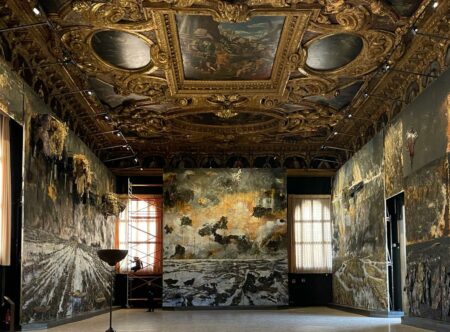
Anselm Kiefer
Speaking of war and destruction, you mustn’t miss the masterwork at the Doge’s Palace by the German artist based in Paris, Anselm Kiefer, who we recently talked about (see the report on his work at the Grand Palais Ephémère). It resembles a futuristic and apocalyptic Wagner symphony.
Blood

Anish Kapoor
Clearly the great symbol of war as seen through the artist’s paintbrush is blood. British artist Anish Kapoor has made it into an obsession. He is doubly present in Venice with the opening of a personal foundation at the Palazzo Manfrin in the city’s Jewish Ghetto and an exhibition at the Accademia.
Anish Kapoor
Don’t miss out on a visit to his foundation in this formerly derelict building, where he gives form to red secretions resembling entrails or viscera which reveal the secret interior of the human body. Menstrual blood, the blood of life and the blood of death… He places in opposition “the gods of feminine blood, the mortals, with the gods of heaven, blue and masculine, who judge and are immortal.” He talks about the principles behind his work: “I discovered in myself that what I had spent so long searching for is what is inside the object. And this interior space is far bigger than the exterior. Psychically and physically.” His display is clearly, first and foremost, a tribute to womankind.
A women ‘s Biennale
More generally we can say that the Venice Biennale of 2022, with its vast array of peripheral events, is a women’s Biennale, and so it shall go down in history.
Louise Nevelson

Louise Nevelson
At the Piazza San Marco there is an exhibition dedicated to an American artist who represented the United States at the Biennale exactly 60 years ago: Louise Nevelson (1899-1988). In a fatalistic irony, she was in fact born in Ukraine before her parents emigrated to the United States. Her work, which has perhaps been a bit forgotten on the European side, is a mix of dismantled readymade, architecture, and a kind of shattered Pop art which could be the heir to Kurt Schwitters’ collages.
Arne Glimcher
It is all unified by the colour black, giving her composition an air of scorched earth. The founder of the multinational Pace gallery, Arne Glimcher, reveals how he began championing her in 1964, how she had never sold anything until 1958 and how this intransigent artist unflinchingly followed the course of her own creation. A little slice of art history featuring Diego Rivera too, for whom she worked as an assistant before she was sent away by Frida Kahlo.
American Pavilion
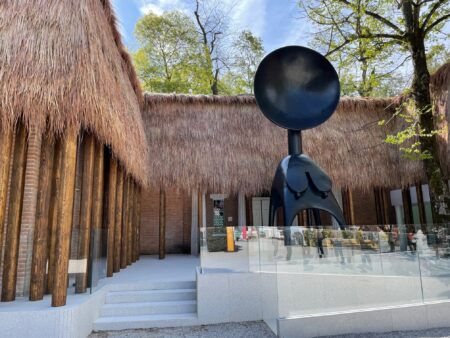
This year the American pavilion is occupied by a woman, Simone Leigh (born in 1968), whose activist and aesthetic stance consists of a focus on black women. The pavilion has been transformed into a hut covered in a thatched roof in reference to the terrible colonial exhibition in Paris in 1931.
Sovereignty
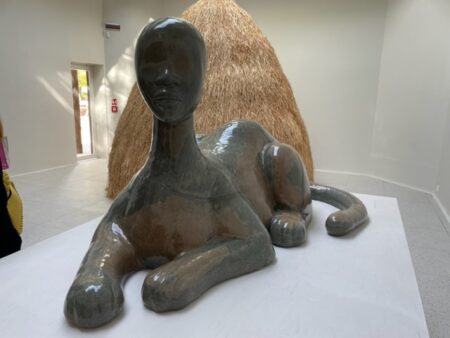
Simone Leigh
Her exhibit has been baptised, like a victory cry, “Sovereignty”. It is a journey through sculpture that ranges from the literal representation of a woman washing sheets in a river, to a kind of goddess, or giant and powerful queen whose head has been replaced by a shell, the cowrie, a symbol of luck but also apparently the first known currency in prehistory.
Jill Medvedow
Jill Medvedow, director of the Boston ICA and commissioner of the pavilion, explains why, in her view, Simone Leigh is important, with the additional perspective of the curator of the exhibition Eva Respini.
Cecilia Alemani
Lastly, the international pavilion at the 2022 Biennale, conceived by the Italian who is based in New York, Cecilia Alemani, is also a show that enshrines the artistic work of women. 1433 artworks created by 213 visual artists, 80% of them women… (See the report on the subject).
She has succeeded
But what we retain primarily from this mega-show, from a curator who has had relatively limited prior experience, is that she has succeeded in creating a fluid and coherent layout, which has rarely been the case since I have been attending the Biennale.
Belkis Ayon

Belkis Ayon
Take the start of the vast display at the Arsenale. It begins once again with a black princess by Simone Leigh, but this is linked to the fascinating work of the Cuban artist who died at the age of 32, Belkis Ayon (1967-1999). The Reina Sofia museum was also staging a retrospective until 18 April on this troubled and little-known artist who was interested in an archaic Cuban secret society. She created assemblages made up of large, expressive silhouettes. Leigh and Ayon share a pared-back representation in terms of their figures.
Disappointment

The truly great disappointment in the choices of Cecilia Alemani is her all too fleeting focus on surrealist women who have been hitherto underestimated, such as Leonora Carrington or Leonor Fini. A painting here, a book there, behind panes of glass which lend this room’s layout an air of a luxury boutique… They deserved a better reinstatement. Coincidentally, they can also be found represented elsewhere, at the Guggenheim museum in Venice, as part of the exhibition on surrealism and magic, “Enchanted Modernity”.
Tishan Hsu
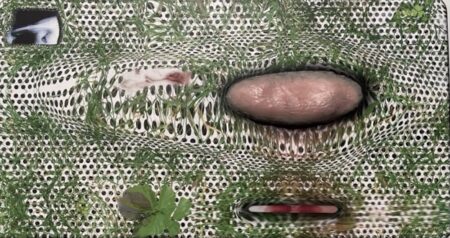
Tishen Hsu
Cecilia Alemani’s biennale is also a site for discovery particularly in the field of painting such as with the remarkable yet frightening compositions merging man and machine by the American artist of Chinese origin Tishan Hsu (born in 1951). I noticed his work already in 2019 at Art Basel Hong Kong as it was presented for the first time by Empty Gallery (See the report here).
Serbia
https://www.youtube.com/shorts/FyTkq3jZTCI
Lockdown has been a test, and artists have addressed the subject each in their own way. In the pavilion of the Republic of Serbia, Vladimir Nikolic has made the definitive video on the solitude of the swimmer. The endless column of the man in chlorinated water. Filmed from directly above, a man swims breaststroke in a straight line in a pool. A hypnotic minimal work.
Francis Alys
The great Belgian artist Francis Alys, for his part, was worried about children during the pandemic. He visited numerous countries to go and meet with them and watch them playing. With the advent of video, street games are disappearing (see the report on this subject from the Eye Museum in Amsterdam). At the Belgian pavilion he has installed large screens which sublimate these children’s games, placing them in dialogue with very small paintings.
Kids first
He created these miniatures, as the impressionists used to say, “sur le motif” (“on the ground”). He calls them portable paintings. They were also an excellent way to attract the attention of children before watching them play, from life. His mini-paintings and his videos therefore act as two axes of the same work of great poetry. It’s worth noting that the films are accessible to download for free, a rare offering in an all too mercenary art world.
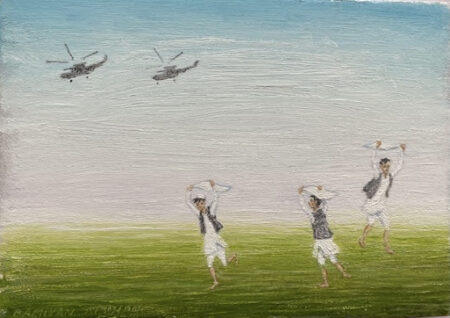
Francis Alys
Yunchul Kim
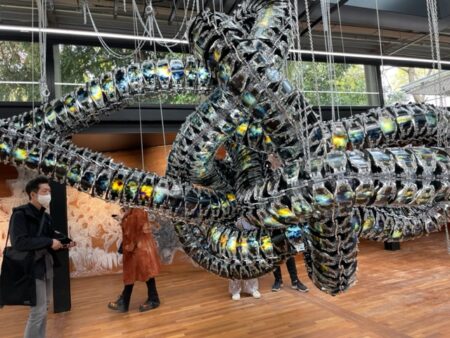
Yunchul Kim
Lastly, the most spellbinding pavilion at the Biennale is the Korean one, occupied by Yunchul Kim, who studied music. He’s created a kind of articulated dragon which is 50 metres long, whose scales are made out of silicone with multicoloured reflections. The movement is generated by an algorithm. “Knots have a strong symbolism in all cultures,” explains the author of this scientifically poetic machine.
Subodh Gupta
At the opposite end of the spectrum, during the vernissage, the Indian artist Subodh Gupta, known for his installations composed of utensils from daily life in India, cooked for free in the gardens of the hotel Cipriani. His gesture, entitled “Cooking the World”, was a performance as a sign of love and appeasement. “The people eating form part of the installation and they are eating my art,” explains the Indian art star. A number of conceptual artists, starting with Felix Gonzalez-Torres’s candy, have taken up this idea of ingestion. For my flesh is true food… An excellent way to conclude the Venice Biennale, a reflection of troubled times.
And also, in Venice
Bruce Nauman at la Punta della Dogana: See the report here
Marlene Dumas at Palazzo Grassi: See the report here
Support independent news on art.
Your contribution : Make a monthly commitment to support JB Reports or a one off contribution as and when you feel like it. Choose the option that suits you best.
Need to cancel a recurring donation? Please go here.
The donation is considered to be a subscription for a fee set by the donor and for a duration also set by the donor.

